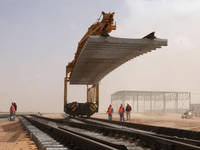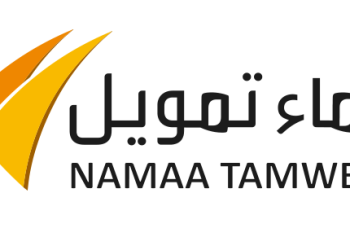Tripoli: March 29
Libya is shelving plans for a 3,170 km national rail network, says the government, in favour of . . .[restrict]sorting out its civil aviation problems, which this week led to the effective EU ban on Libyan carriers using European airspace and airports.
The unspoken sub-text to the announcement today from Transport Ministry under-secretary Fawzi Bitamr, is that the two countries Qaddafi hired to build his $12 billion standard gauge railway network, China, with the lion’s share and Russia, have shown no desire to come back to the work they abandoned at the start of the revolution. Indeed official sources indicated that the Chinese have imposed so many conditions, before they return, it seems as if they do not wish to resume operations. Before the revolution, Chinese companies had over 50 major investment projects worth in the region of $19 billion.
The China Railway Construction Corporation (CRCC) won in 2008 the $2.5 billion contract to build a 352 km line between Al Khums and Sirte . This was due to be completed by next year. There was also an 800 km line from iron ore deposits at Wadi Shati near Sebha to Misrata. That line should have been finished this year. In 2009 CRCC was awarded a further contract worth $802 million for 172 km of the network from Tripoli to the Tunisian border at Ras Ejder, to be completed by the middle of next year.

Meanwhile in August 2008 Russian Railways (RZhD) began work on a $4.5 billion project for a 554 km section of the line between Sirte and Benghazi. The company brought in track laying machinery, flat wagons and a 100 tones crane. It also built accommodation for 400 workers at what would become Ras Lanuf station. During construction 3,500 Libyan and Russian workers were to be employed.
Ansaldo STS, a subsidiary of Italian conglomerate Finmeccanica was chosen to provide the signalling systems for three stretches of line. The $990 million contract was the largest it had ever won. The collapse of the work left Ansaldo with substantial year end 2011 losses.
Vossloh of Germany won the subcontract to supply the Chinese with rail fasteners and switches for the line between Sirte and Ras Ejder. However, in February it was told by CRCC to stop shipments. Vossloh said that it had budgeted in 2011 for sales of $93.5 million.
Another German firm Waltherbau was slated to establish a concrete sleeper factory at Al Khums to produce 500,000 monobloc sleepers a year, and the total requirement is for 6·8 million.
While the Misrata steelworks was due to supply materials for the construction works, since there was no mill to produce the 370,000 tonnes of 60 kg/m rail needed for the permanent way, this was all being imported.
According to the well-informed Railway Gazette International, the whole 95-station network was to need the construction of 240 km of access roads, 554 bridges, 1,205 culverts, and 115 million m3 of earthworks. It commented: “While much of the alignment runs through relatively flat country, there are potential problems in building a line through the highland region between Ajdabiya and Tobruk in the northeast. This means that an alternative inland route may be chosen.”
From the outset in the 1980s, when it was first mooted and the outline design produced for the link between the Tunisian border and Tripoli, the whole Libyan railway network scheme was dogged with delays. What was, along with that of Saudi Arabia, one of the world’s two largest rail projects was in 1998, supposed to be completed within five years.
The Railways Executive Board then decided to adopt a more realistic 10 year time frame, which took account of the selection and appointment of contractors. From the start, according to diplomatic sources, Chinese and Russian firms were favoured for the work. Beijing and Moscow entered into long negotiations, which reportedly revolved more around price than the technical challenges of the project.
The railway board had worked out it would need to order 244 diesel-electric locomotives and 8,500 pieces of rolling stock, the majority freight wagons. At a future date it was planned that the double track coastal line would be electrified. The entire networks once completed was expected to provide 25,000 permanent jobs.
Tripoli station was being built 10 km from the City centre, from where it would be serviced by a light railway, the contract for which was never put out to tender. A long-term plan was to extend the line from Sebha across the Sahara to Chad with another link to the Sudan.
[/restrict]











